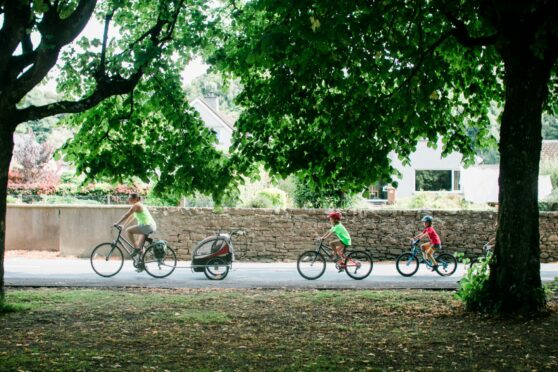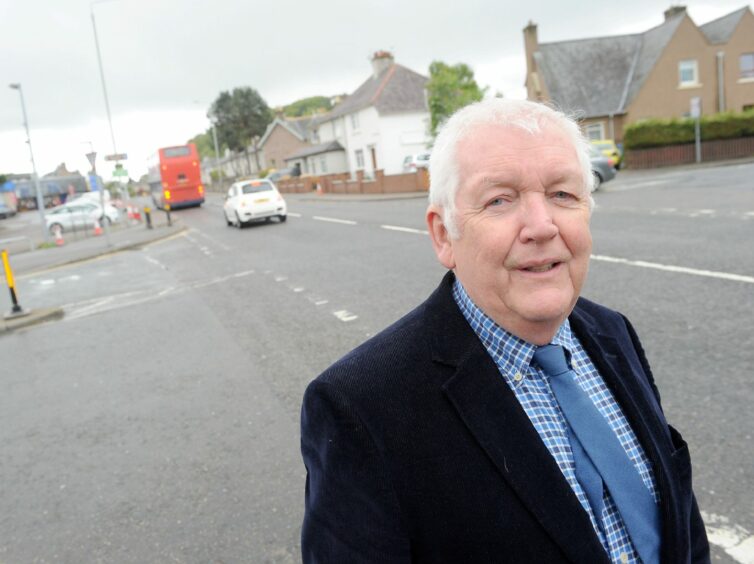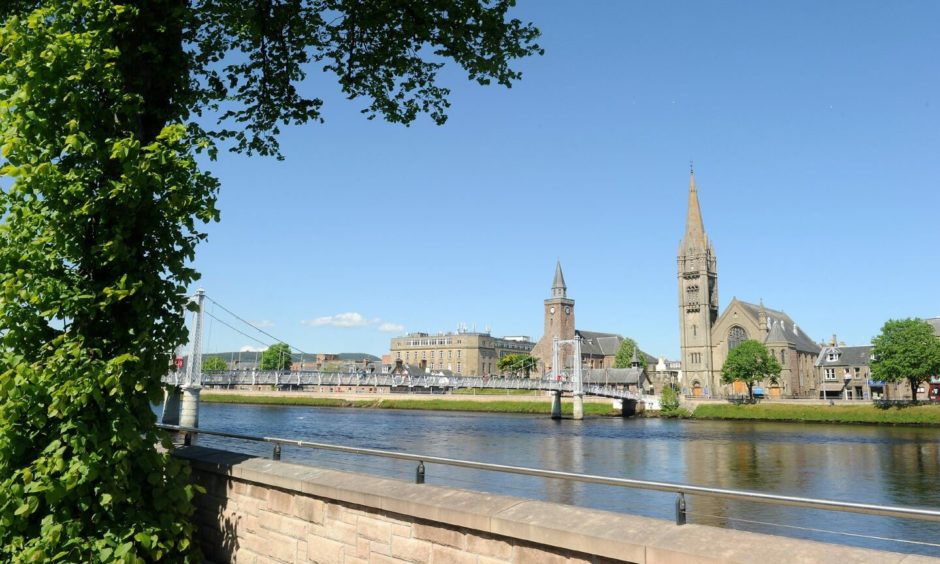Inverness councillors have voted in favour of retaining the controversial one-way traffic system on Riverside Way.
The decision followed a 12-7 vote at a tense meeting of the Inverness city committee today.
Highland Council can now make permanent a Traffic Regulation Order for a one-way system with cycling contraflow.
The longer term design for the whole Riverside area is still subject to further discussion.
The one-way system divided opinion both among the public and the Inverness councillors.
Fourteen people objected to the plan while there were 18 comments in support.
Much of the opposition came from local residents and Ballifeary Community Council, who said the one-way system had created a ‘rat run’.
They raised concerns about increased traffic volume and speeding.
However, the council said even with a slight increase the street is still considered ‘low traffic’ and average speeds did not exceed 21mph.
Council data shows that active travel now accounts for 70% of traffic on Inverness Riverside Way.
‘I’ll vote for what works – and this doesn’t’
Local members Bill Boyd and Alex Graham tabled an amendment against the scheme.
While both councillors claimed to support active travel in principle, they said this design was flawed.
“The people I meet – and myself too – support active travel, but this is not the way to do it,” said councillor Boyd.
He added that Sustrans’ own guidance highlights that speeds and traffic volume can increase when a street becomes one-way.
Mr Boyd also repeated his previous concerns about the consultation process.
He said the more accurate term is “passive engagement”. Not all views are reflected in the report, said Mr Boyd.
Councillor Alex Graham summed up the mood of those opposed.
“Just because we support active travel doesn’t mean we have to support every active travel scheme that comes before us,” he said. “I will vote for what works, and this doesn’t.”
Council officers warned members that a failure to make the TRO permanent could jeopardise £1.5m active travel funding from Sustrans.
Councillor Andrew Jarvie and councillor Ron MacWilliam both took issue with the funding warning.
Mr MacWilliam said it’s a tactic regularly employed by the council to push through controversial schemes. “These sorts of claims affect the democratic decision-making process,” he said.
Change is painful
Twelve councillors supported a motion by Provost Helen Carmichael (seconded by Councillor Emma Knox) to approve the TRO.
Inverness members supporting the Riverside Way scheme acknowledged that it’s “not perfect”.
They said that active travel generally involves traffic displacement and behaviour change.
However, they urged colleagues to agree the TRO and allow designs to continue. Councillor Trish Robertson, who chairs the climate change committee, said it’s time for action.
“It’s been three years since we declared a climate emergency and it’s been all talk so far,” she said. “Behavioural change is difficult but this is the right way forward.”
She urged members not to throw out the scheme, but to give officers time to fine-tune the plans. “We need to move forward on this, not backward,” she said.
Boris Bikes – or Helen’s Bikes?
Both councillors Emma Knox and Emma Roddick delivered powerful speeches underlining the importance of active travel. Ms Knox says she travels to Inverness specifically to cycle along the river.
In a touch of light relief, she suggested ‘Helen’s Bikes’ as a spin on the famous Boris Bikes of London.
Ms Roddick asked the committee not to simply listen to those who shout loudest.
“Twenty angry emails sometimes lead politicians to believe that everyone hates this, despite that being 20 out of thousands of constituents,” she said.
Ms Knox urged any members of the public listening to engage with the council.
“Please don’t assume that councillors are going to make the right decision. Or be aware of your opinions if you haven’t expressed them,” she said.
“Angry people write us emails every day and too many politicians develop principles based on who shouts the loudest. So speak up for what you believe.”


